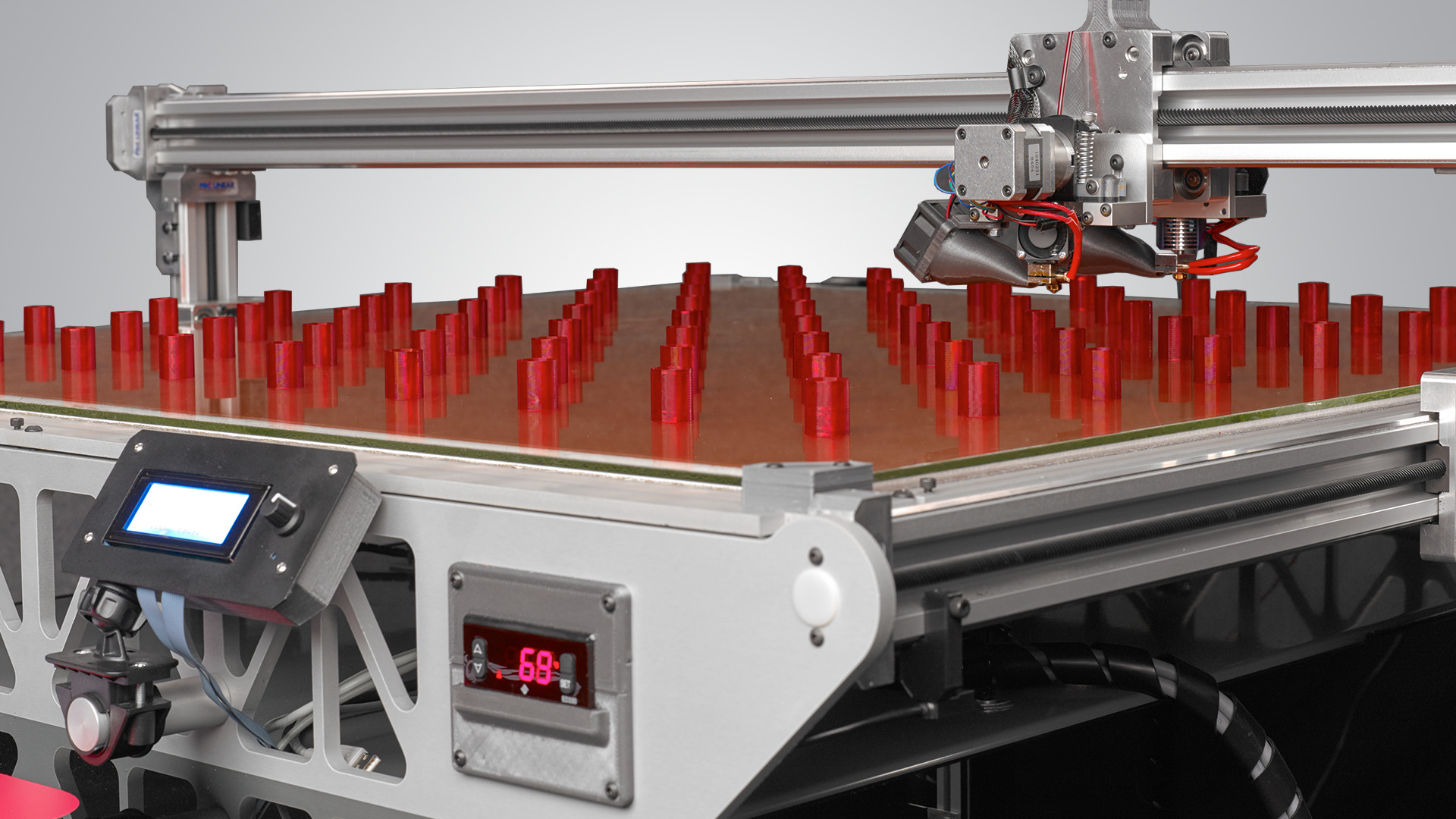Illinois-based large-scale 3D printer manufacturer 3D Platform has introduced new extruder technology and materials, developed in partnership with French 3D printing reseller Delta 3D Print and Canadian 3D printer component manufacturer Dyze Design. They were created using an ‘open market approach’ in order to advance the End of Arm Tooling (EOAT) and material options available for customers using its 3D printers.
The company has also released a portfolio of educational tools for additive manufacturing designed to help raise the knowledge of its customer base. Further reinforcing its open market approach, the training materials are available to the additive manufacturing community for free.

Open market development for flexible 3D printing
The development of the new EOAT technology takes advantage of the flexibility of 3D Platform 3D printers which are capable of interchanging between different types of dispensers and extruders. Collaborating with Delta 3D Print resulted in the development of a new dispenser capable of extruding silicone and other thermoset materials. This means 3D Platform customers are now able to choose between multiple different configurations, namely a single dispenser, two dispensers, or a single dispenser and a thermoplastic extruder together. By combining hard plastic and soft silicone extruding capabilities, 3D Platform enables the production of advanced new parts with integrated gaskets.
Dyze Design on the other hand has worked with 3D Platform to manufacture a pellet-fed extruder, designed for a 1 m x 1 m platform. The extruder is capable of flow rates up to 1,000 mm³/s (4.5 kg/hr), allowing for speedy prints on the company’s large-format 3D printers. This is one of the first customer introductions to the ‘Pulsar’ pellet extruder technology from Dyze Design.
Educating the masses on additive manufacturing
3D Platform’s educational tools were developed as the company believes that additive manufacturing is “highly skilled trade that requires trained technicians to operate correctly.” Through a “comprehensive portfolio of competency tools,” 3D Platform is aiming to provide a set of guidelines for customers looking to develop their additive manufacturing skills.
The educational tools are divided into two sections. The first is a series of nine calibration steps termed “Building blocks of Success.” The second section discusses a range of troubleshooting case studies.
The building block files designed by 3D Platform only verify a single or limited number of process settings, with the intention of reducing unexpected changes. Each building block operates one after the other, introducing new variables with every block. They can print in a short period of time, so users can lock in their options quickly before proceeding to the next block in a step-by-step process to benchmark the 3D printer.
3D Platform’s case studies come in the form of 2-page downloads to provide an easy reference for fixing common issues during 3D printing. Common problems covered include oozing filament & poor print quality, blobs and zits, de-laminating layers, stringing, support material, and warping.
Machining vs large-scale 3D printing
3D Platform’s product range of large-scale, industrial-class 3D printers includes the WorkSeries, and the Excel big area additive manufacturing machine.
In 2018, 3DP worked towards demonstrating the advantages of using its large-scale 3D printing capabilities over traditional manufacturing methods like CNC machining. The company was able to 3D print tooling parts with a total cost of $1700, cheaper compared to the $2,500 it would cost to CNC machine them.
Further demonstrating the capabilities of its large-scale 3D printing, 3DP also 3D printed a 1:1 scale replica of the Boeing 737’s main bypass turbofan measuring at 1.55 meters in diameter for San Francisco service bureau Titanic Design. Tom Price, owner of Titanic Design, stated that: “This machine directly competes with the best equipment on the market […] The cost and speed of the machine lets us directly challenge the status quo and best practices in hardware product development, and even challenge what qualifies as a final product.”
Subscribe to the 3D Printing Industry newsletter for the latest news in additive manufacturing. You can also stay connected by following us on Twitter and liking us on Facebook.
Looking for a career in additive manufacturing? Visit 3D Printing Jobs for a selection of roles in the industry.
Featured image shows large scale batch production of cylinders on the 3D Platform Workbench Photo via 3D Platform

